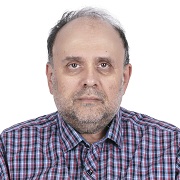
Prof. Boris Melnikov
Shenzhen MSU – BIT University, China
Title: On various metrics between DNA sequences and an approach to their research
Abstract:
In practice, it often becomes necessary to calculate certain distances in a special way, not only between DNA strings, but also between any other sequences of characters. For two DNA chains, there exists several algorithms for calculate the distance; in the paper, we used five such algorithms as examples. For some algorithm under consideration and some selected set of genomes (usually several dozen examples of mitochondrial DNA, but other options are possible), a square matrix of distances between genomes is naturally formed based on the calculated distances. The main assumption made for all the problems we are considering is that in good distance determination algorithms, the triangles obtained in this matrix differ little from the isosceles triangles; this assumption is confirmed in practice.
With this assumption, we determine the badness of a particular triangle, and based on it, we solve several groups of problems using heuristic algorithms. The first task is the simplest: based on the total badness of the matrix, we organize algorithms for determining the distances between genomes, from more successful to less successful. In the second group of problems, we use heuristic algorithms to restore a partially filled distance matrix. In the third group of problems, based on the calculation of the correlation coefficient between the sequences of triangle faults, we show the mutual discrepancy of some pairs of algorithms for determining the distances between DNA chains. In the fourth group of problems, based on the proximity of two distance determination algorithms, we form a table of such closeness for all pairs of algorithms, and based on it we determine the quality of the original algorithms; it is important that the obtained resulting quality of the algorithms approximately corresponds to the results of the first group of problems, despite the fact that they were calculated using completely different approaches.
Biography:
In 1979, I graduated from the Physics and Mathematics School at Moscow State University (currently Kolmogorov Mathematical School).From 1979 to 1984, I studied at Moscow State University (Faculty of Computational Mathematics and Cybernetics).Further, until 1992, I worked as a programmer at a scientific research institute, and since 1988, I simultaneously studied in correspondence postgraduate study at Moscow State University.In 1990, I defended my first dissertation (PhD), also at Moscow State University.Soon I began working at the Ulyanovsk Branch of Moscow State University, which was subsequently transformed into an independent university.At this university, I went through all the "steps" from assistant to professor, head of department; at the same time in 1997, I defended the "second Russian" dissertation (doctoral thesis, "Habilitation").
From 2003 to 2016, I worked at two other universities of Volga Region (Togliatti and Samara).In them, I was the Chairman of the Dissertation Council for 5 years, and the chief editor of a scientific electronic journal for 3 years.In 2016, I returned to Moscow, where I worked simultaneously in Moscow State University and Russian State Social University.In 1998-2014, I was 12 times the visiting professor at leading universities of Europe (including ETH-Zurich 3 times).In 1999-2019, I was scientific adviser of 13 candidates of sciences (PhD) already defended.I have about 40 presentations at international conferences outside Russia and about 100 international conferences in Russia.Since 2018, I have been working in China; I am Professor of Shenzhen MSU-BIT University.
Fields of my scientific interests: artificial intelligence and programming nondeterministic games; heuristic algorithms; discrete optimization problems; mathematical modeling; DNA sequence processing algorithms; nondeterministic finite automata and regular languages; non-traditional variants for setting context-free languages; semigroup algebra.